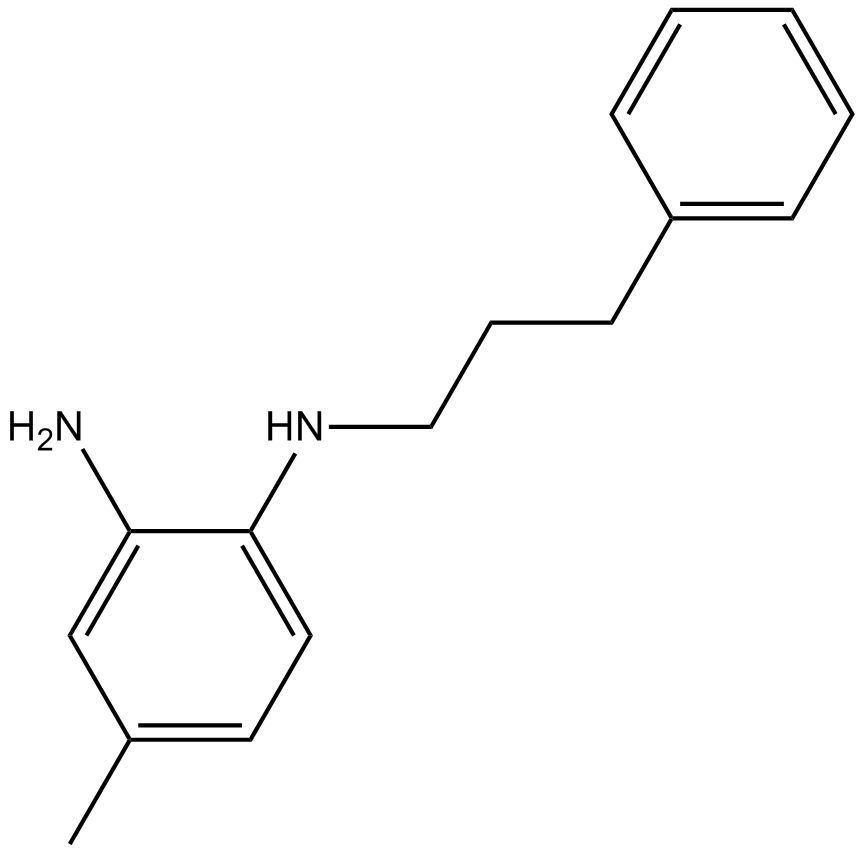JSH-23 (Synonyms: NFκB Activation Inhibitor II) |
| Catalog No.GC11438 |
JSH-23, exhibited inhibitory effect on nuclear translocation and NF-κB transcriptional activity with an IC50 value of 7.1 µM in lipopolysaccharide (LPS)-stimulated macrophages RAW 264.7.
Products are for research use only. Not for human use. We do not sell to patients.

Cas No.: 749886-87-1
Sample solution is provided at 25 µL, 10mM.
JSH-23, exhibited inhibitory effect on nuclear translocation and NF-κB transcriptional activity with an IC50 value of 7.1 µM in lipopolysaccharide (LPS)-stimulated macrophages RAW 264.7 [1].
JSH-23 (1 µM) monotherapy significantly reduced the chemotactic sensitivity of the cells to SDF1. The co-treatment with cordycepin (10 µM) and JSH-23 (1 µM) significantly inhibited the expression of CXCR4 [2].
JSH-23 (1 and 3 mg/kg) treatment significantly reversed the nerve conduction and nerve blood flow deficits seen in diabetic animals [1]. Protein expression studies showed that nuclear translocation of p65/p50 subunit was inhibited by JSH-23 treatment in the sciatic nerve. The treatment also lowered the elevated IL-6, TNF-α, cyclo-oxygenase (COX-2) and inducible nitric oxide synthase (iNOS) levels/expression [1]. Mice were treated with JSH-23 (20 or 40 mg/kg) which directly affects NF-κB transcriptional activity. Kidney function, tubular injury (ATN, serum neutrophil gelatinase-associated lipocalin [NGAL], but not apoptosis) and myeloperoxidase (MPO) activity were significantly improved by JSH-23 (40 mg/kg) [3].
References:
[1]. Kumar A, Negi G, Sharma S S. JSH©\23 targets nuclear factor©\kappa B and reverses various deficits in experimental diabetic neuropathy: effect on neuroinflammation and antioxidant defence[J]. Diabetes, Obesity and Metabolism, 2011, 13(8): 750-758.
[2]. Guo Z, Chen W, Dai G, et al. Cordycepin suppresses the migration and invasion of human liver cancer cells by downregulating the expression of CXCR4[J]. International journal of molecular medicine, 2020, 45(1): 141-150.
[3]. Ozkok A, Ravichandran K, Wang Q, et al. NF-κB transcriptional inhibition ameliorates cisplatin-induced acute kidney injury (AKI)[J]. Toxicology letters, 2016, 240(1): 105-113.
Average Rating: 5 (Based on Reviews and 33 reference(s) in Google Scholar.)
GLPBIO products are for RESEARCH USE ONLY. Please make sure your review or question is research based.
Required fields are marked with *




